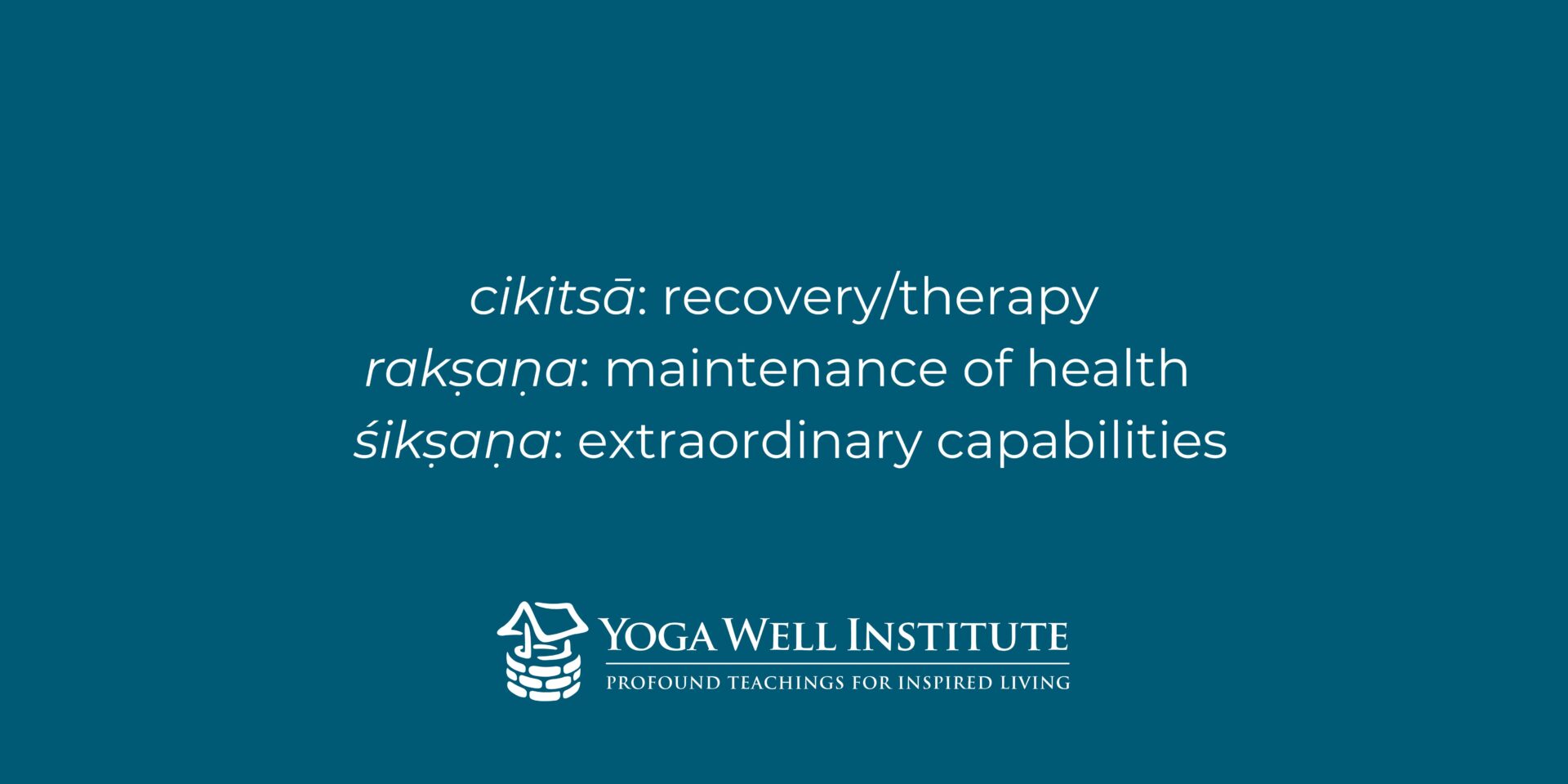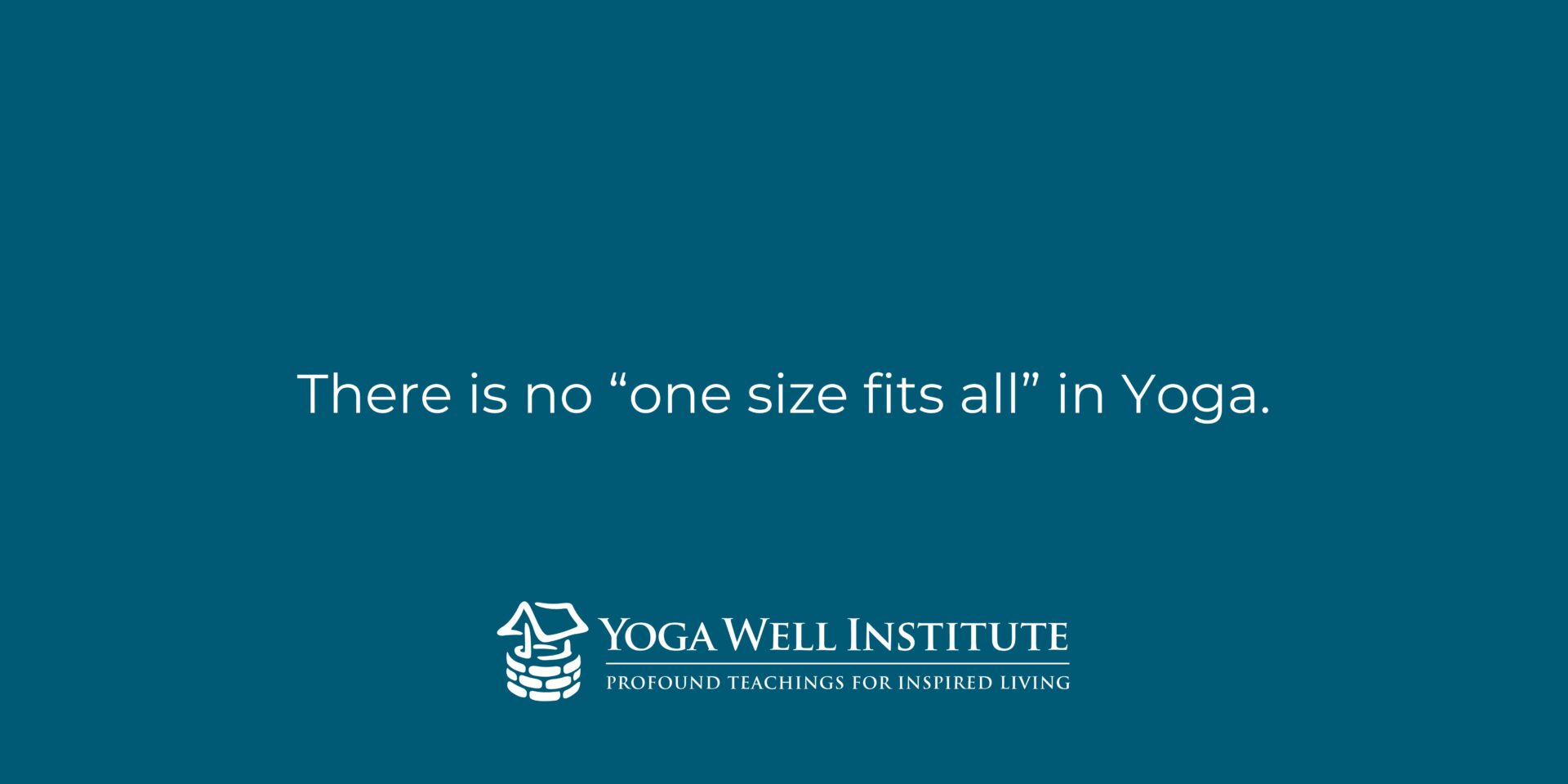Just about everyone in the U.S. has an idea of what Yoga is. So, you probably think of a Yoga Teacher as someone who leads group classes through Yoga postures, breathing exercises and meditation. And these classes usually result in the students feeling relaxed, peaceful and joyful.
But do you know what the difference between a Yoga Teacher and a Yoga Therapist is?
Goals of Yoga
The three general goals of Yoga are:
- recovery/therapy (called cikitsā),
- maintenance of health (called rakṣaṇa), and
- extraordinary capabilities (which is known as śikṣaṇa).
These goals intersect with the Indian concept of the stages of life (aśramas): studentship, householder, and retirement (which is divided into two steps forest dweller and renunciate). There is a different emphasis on Yoga practice for each of the different stages of life.

Stages of Life
In studentship, physical practice (āsana) is considered the primary practice for this stage of life. The young mind is not as stable on attention as it will be in adulthood and the body heals quickly and has capabilities that develop well when pushed in the practice of postures or āsanas. Householders have many more responsibilities, limited time and a little older body that doesn’t heal as fast nor respond as positively to being pushed. The mind is fully developed, so āsana is still important but breath work (prāṇāyāma) is considered to accomplish the most in the shortest period of time. Finally, when you transition into retirement, the traditional focus of practice for healthy people becomes meditation.
Group Yoga classes taught across the U.S. tend to be maintenance-oriented classes, geared toward healthy students or householders. Yoga instructors with a 200-hour certificate have generally been trained to teach maintenance-oriented classes for healthy younger people, focusing largely on attaining the form of the posture. In this way, the focus is really about changing the person to the form – changing the person to the Yoga.
Yoga Therapists Adapt the Practice to the Student
Yoga Therapy focuses on adapting the technique to the person in a much more personal setting.
The goals of Yoga therapy are different – to recover or maintain health – rather than maintaining health. A Yoga Therapist typically works one-on-one with a client, to focus on their specific imbalance and needs. This different approach requires changing the techniques to meet the person and thus, different and much more substantive training.
Yoga Therapist Training
A Yoga Therapist has a minimum of 800 hours of training. They learn about Western and Indian approaches to anatomy, physiology, and psychology. They learn about the symptoms of chronic illnesses, diseases, and disorders. A certified Yoga Therapist will have some understanding of Western medicine’s approach to prevention and cure, as well as Indian wellness systems and learns how to apply the various techniques of Yoga to address the specific characteristics of each individual.
The Practice Depends on the Goal
For example, one of the most important postures, mahāmudrā, increases digestive fire which cleanses impurities from the system, and lengthens the spine. Seated on the floor, with one knee bent and the heel of that bent leg in the perineum, the other leg is out straight in front, and you lean forward over the extended leg at an approximately 45-degree angle, keeping the back straight and stretching both hands to the foot of the extended leg. Remaining in mahāmudrā is strenuous: you will sweat and your back will ache. You can only do the posture in this manner if you are healthy.
If the goal is maintenance or extraordinary capabilities, then you might do this posture sitting on the floor as described with a focus on proper breathing techniques. But if the focus is therapy, you might instead sit in a chair, legs bent with both feet on the floor, a slight rotation of the torso toward one leg and breathe easily. There will still be an effect on the digestive system and spine but because the posture has been modified to be less intense, it might be accessible to a person with a compromised condition, which the normal posture likely would not have been. If you are a healthy student or householder in need of relaxation and stress reduction, the āsanas of a Yoga studio will work well for you. But if you are dealing with physical limitations that make it difficult, painful or even dangerous for you to attempt those postures, consider researching the Yoga Therapists in your area.

Find a Yoga Therapist Near You
There is no “one size fits all” in Yoga. Your needs, capabilities, interests and circumstances are unique to you, just as your practice should be. Receiving guidance from an experienced Yoga Therapist is the best way to develop a long term Yoga practice that is personalized for you. Your Therapist designs your daily practice (and revises it, as you evolve). This is a profoundly nourishing, healing, and personal process.
At the Yoga Well Institute, we believe working with a Yoga Therapist, and the healing that happens in and through this relationship, is the essential heart of Yoga practice.
We offer a Mentor Matching service (at no charge) to help continue the ongoing teacher-student link that we also have been recipients of. It is a small way to appreciate the care, effort, and love of all those who have cared for these precious teachings down through the ages and have thus given us an opportunity to benefit from them as well!



